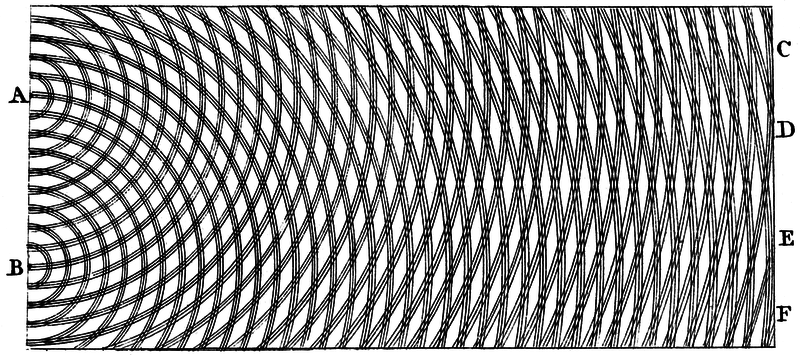Photo: Romain Tyrol in the laboratory. Source : Thomas Angus, Imperial College London
Romain Tyrol and Stefano Vezzoli of Imperial College London and their colleagues have learned to "cut holes" in time and observe the interference of light on these "holes". The results of their experiment are published in the journal Nature.
Tirol and Vezzoli repeated the classic experiment set by the English physicist Thomas Young, reversing space and time. Scientists came up with the idea of using a mirror made of indium-tin oxide (a mixture of indium and tin oxides; almost all mobile phone displays are made from this material). A film of indium-tin oxide can, depending on external conditions, both be a reflective mirror and absorb the radiation incident on it. The authors of an article in Nature took advantage of the fact that if such a film is shined with a short laser pulse of a certain wavelength, then it will become specular for the duration of the pulse.
Therefore, the installation for observing "temporal interference" turned out to be very simple: a test beam of laser radiation is incident on a plate coated with indium-tin oxide; if the plate is illuminated with two pulses of an additional laser, then it becomes reflective for the duration of the passage of the pulses, due to which the effect of two "slits" passing the probe laser beam, following one after another in time, is created. The reflected beam of the probe laser hits the device for studying the radiation spectrum. In it, instead of the original monochromatic spectrum, we will obtain a frequency spectrum corresponding to the interference pattern of dark and light bands, as in the classical Young experiment. If in Young's experiment the bands are observed in space, then in the experiment of Tyrol, Vezzoli and co-authors the bands are observed on the frequency spectrum graph.
The significance of this work lies in the fact that, in addition to the experimental verification of the fundamental laws of optics and the demonstration of a “pair” to a classical experiment, the observation of temporal interference, according to the authors, can lead to a breakthrough in the field of creating an “optical realization of time-dependent metamaterials.” ( Metamaterials are artificial composite materials whose properties are determined by the shape and arrangement of microscopic components; they can have amazing properties not found in nature, such as a negative refractive index.) Outside of optics, according to the authors, double-slit interference can be extended to other wave processes – matter waves, optomechanics and acoustics, while neuromorphic calculations can be among the applications of the phenomenon they discovered.


Interference is a coherent addition of waves, that is, an addition that takes into account not only the amplitude of the waves, but also the phase. If the waves of the same phase are added, then the light is amplified, if the opposite – it goes out. So, by adding two light waves, you can paradoxically get darkness. This is exactly what Thomas Young observed in 1803. Jung's experience is as follows. Let's take a point source of light that illuminates two slots in the screen. Place a screen behind the screen. Black and white stripes appear on the screen. This is the interference of waves in space.


